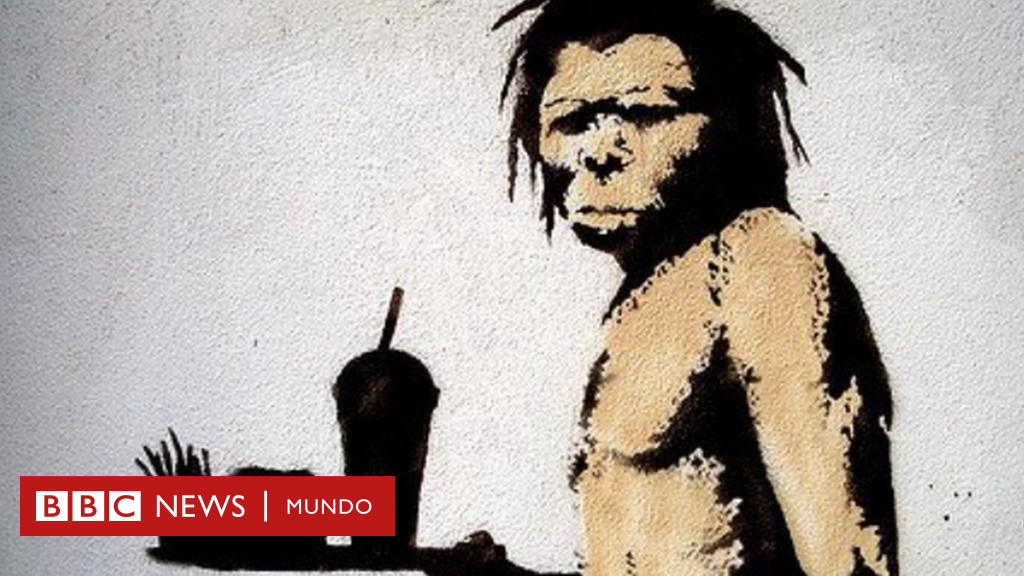- Cecilia Baria
- BBC News World

image source, Hermann Pontzer
Hermann Pontzer, a professor of evolutionary anthropology, has studied the diet of hunter-gatherers in various parts of the planet.
Eating like a “man cave” is a popular diet among those who want to lose weight and eat like they did in the Stone Age.
In an attempt to cash in on a trend commonly known as Paleo, this diet has fantastic properties such as improving skin, boosting immunity, solving digestive problems and helping with weight loss.
But…how do you eat the ancients? The diet includes fruits, vegetables, lean meats, fish, eggs, nuts, and seeds, as these are foods that humans are said to have eaten when they were hunter-gatherers.
This excludes foods that were more common 10,000 years ago when small-scale agriculture began, such as grains, legumes and dairy products.
It all seems pretty coherent, except for one detail: According to Hermann Pontzer, a professor of evolutionary anthropology and global health at Duke University in the US, it’s not true that humans had that prehistoric diet.
“There are many myths about what humans ate in the past”, Pontzer says in an interview with BBC Mundo. “They are romantic beliefs about the past based on the assumption that there was a natural diet.”
By working directly with a community of hunter-gatherers, the scientist was able to measure and monitor what they were actually eating.
The Hatza of Tanzania
Pontzer traveled to Tanzania to study and live with the Hadza, a group of hunter-gatherers who are the closest to the lives our ancestors led today.
Instead of farming or raising animals, The Madza what they live to discover when they travel long distances.
image source, Good pictures
Pantzer traveled to Tanzania to study how a community of hunter-gatherers lived.
Pontzer, who has spent the last decade studying their health and physiology, knows this well.
They walk up to 10 kilometers a day to hunt wild animals, collect honey, dig tubers, collect berries or carry water and firewood.
After studying the data obtained from it and other societies in the world, the researcher argues that indeed “There is no such thing as a paleo diet”He explains that predators have many diets, depending on climate, season and other conditions.
While it is true that wild game, root vegetables and berries contain fewer calories, salt or fat than we humans currently eat, most diets in the societies studied were meat-heavy and low-fat. So say some paleo diet enthusiasts.
Contrary to popular belief, predators eat a lot of carbohydrate-rich, sugary and starchy foods, such as root vegetables, honey and grains, Pontzer says.
There are records dating back a couple of hundred years containing information collected by researchers with evidence of what groups of these types ate.
Among them, the descriptions show that there was not even an ancestral human diet, the expert explains.
“Usually a hunter-gatherer diet has a balance between plants and animals, but it varies a lot.”
What made us so fat compared to our ancestors?
“That’s the million dollar question,” says the researcher.
image source, Good pictures
There are many reasons. For one, we eat too many processed foods, he explains. Protein and fiber have been stripped from them, and sugars and oils, artificial flavors and additives have been added.
Our bodies are better equipped to eat simple foods, but the food sold in supermarkets doesn’t come directly from trees, the ground, or from predators.
From that perspective, eating healthily isn’t easy. “I try to avoid highly processed food, but I’m not perfect and I’m not on a strict diet,” Pontzer says.
“Like many people, I am sometimes tempted to eat delicious processed food”.
R.Remember you can get updates from BBC News Mundo. Download the latest version of our apps and activate them so you never miss our best content.





